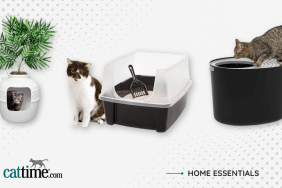This article courtesy of PetMD.com.
Cestodiasis in Cats
Tapeworm infection can affect cats (as well as many other mammals), typically settling in the small intestine. Invasion by the Cestoda tapeworm results in a medical condition that is referred to as cestodiasis. The tapeworm species can include Taenia, Dipylidium Caninum, Echinococcus, and Mesocestoides. Treatment to destroy tapeworms…









